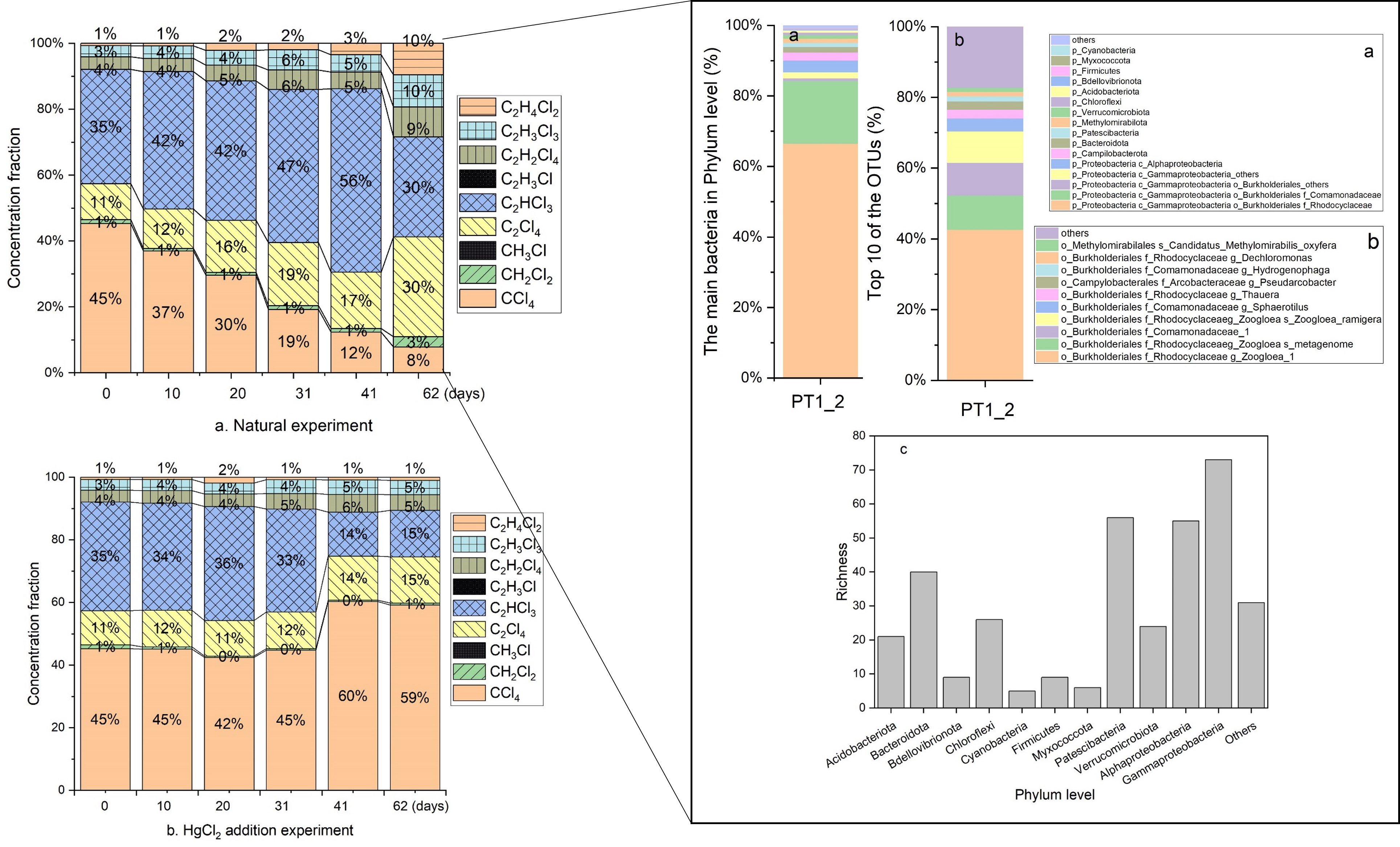
Due to its cost-effectiveness and absence of secondary pollution, the biological approach for eradicating chloride pollution has attracted widespread interest. However, numerous obstacles, including the limited presence of degrading microbes and a substantial impact from environmental variables arises during its practical application. The purpose of this study was to investigate the impact of ambient environmental factors during field surveys on the degradation of microorganism performance. The findings of this study demonstrate a negative correlation between the chlorinated hydrocarbons (CHCs) concentrations and pH, oxidation-reduction potential (ORP). These results suggest that redox conditions would improve the efficiency of chloride degradation. In addition, the degradation of CHCs was found to be primarily influenced by Dechloromonas, which accounted for > 1% of the total 16S rRNA sequences. In the absence of dechlorinating bacteria, the degradation efficiencies for CCl4, C2Cl4, and C2H2Cl4 were 91.7%, 87.8%, and 86.0% lower than the efficiency in the presence of these microorganism, respectively. Therefore, this study provides a comprehensive understanding of the role of biological degradation in controlling chloride pollution, along with substantial evidence supporting the extensive implementation of biological degradation technology.
Total file downloads: 7